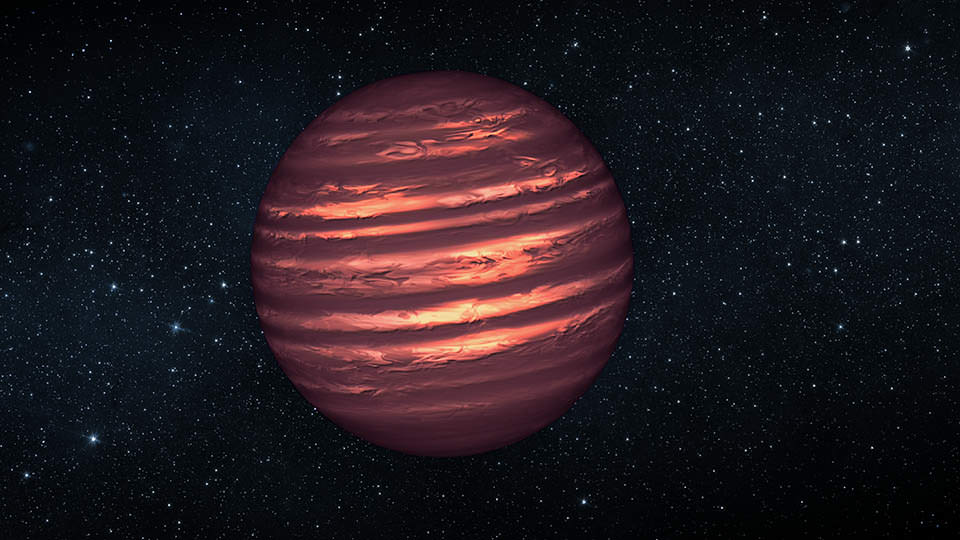Brown dwarfs are in a tough spot. Not quite a star, not quite a planet, they occupy a place between gas giants and stars. They have more mass than gas giants like Jupiter, but not enough to ignite fusion and become a star.
But astronomers still study them. How could they resist?
The gas giant Jupiter is our Solar System’s largest planet, and one of its distinguishing features is the cloud bands that give the planet its striped appearance. Now a team of researchers have spotted similar stripe features on a brown dwarf.
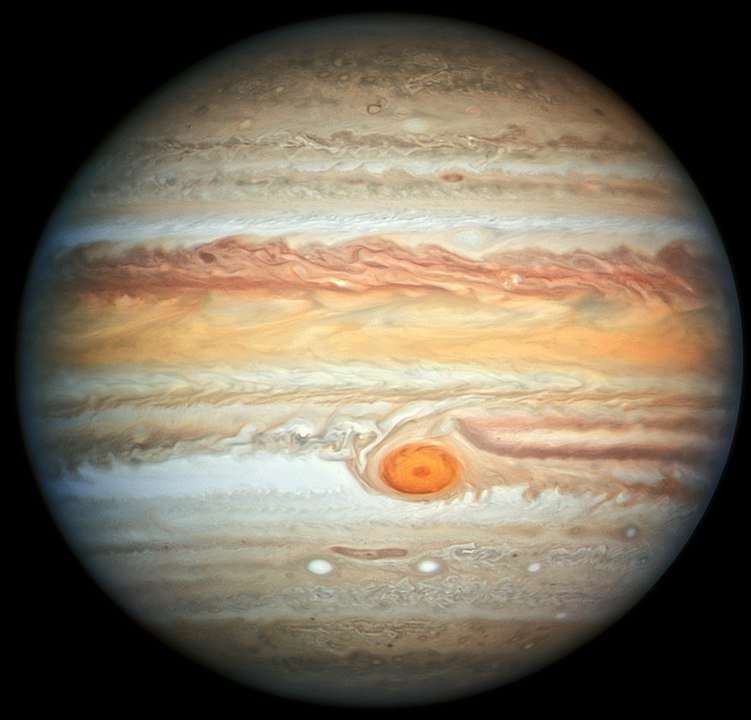
The new study announcing these findings is titled “Detection of Polarization due to Cloud Bands in the Nearby Luhman 16 Brown Dwarf Binary.” Lead author of the study is Maxwell Millar-Blanchaer, a Postdoctoral Scholar in Astronomy at Caltech. The study is published in The Astrophysical Journal.
If you have a pair of polarized sunglasses, then you’re one step closer to understanding how they figured this out.
Light from a source like a candle, lamp, or the Sun, is non-polarized. But when light hits a surface, it can become polarized. That means the vibrations of the electromagnetic waves now occur in a single plane. Usually, we call that glare, like when sunlight comes to our eyes off of a wet road surface. The glare is so great that it can be blinding.
Polarized sunglasses counteract that glare, by filtering out reflected light.
“I often think of polarimetric instruments as an astronomer’s polarized sunglasses. But instead of trying to block out that glare we’re trying to measure it.”
Lead Author Maxwell Millar-Blanchaer, Caltech
In this study, the team used polarimetry to study Luhman 16A, one half of the pair of binary brown dwarfs called Luhman 16 L/T, a transition binary. Luhman 16 are the closes brown dwarfs that we know of, only 6.5 light years from the Sun, in the constellation Vela.
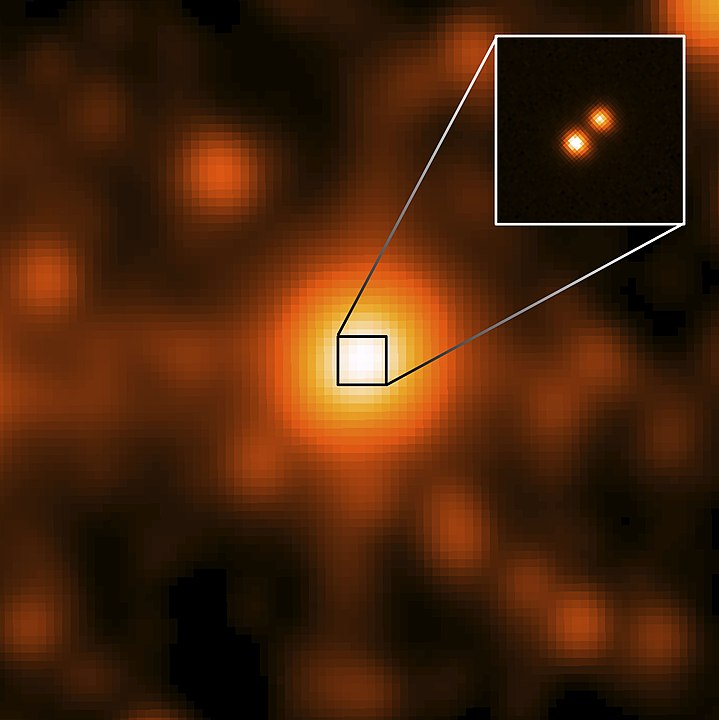
“I often think of polarimetric instruments as an astronomer’s polarized sunglasses,” says Maxwell Millar-Blanchaer, a Robert A. Millikan Postdoctoral Scholar in Astronomy at Caltech. “But instead of trying to block out that glare we’re trying to measure it,” he said in a press release. Millar-Blanchaer and his colleagues used the ESO’s Very Large Telescope in their study.
This isn’t the first time that astronomers have spotted cloud band features on brown dwarfs. Numerous studies, including one from 2017, found gas-giant like cloud features on brown dwarfs. But this is the first time it’s been done with polarimetry.
Polarimetry is not a new technique, but it’s difficult in astronomy. But scientists are developing new techniques for using it, as scientists are fond of doing.
“Polarimetry is receiving renewed attention in astronomy,” says Dimitri Mawet, professor of astronomy at Caltech and a senior research scientist at the Jet Propulsion Laboratory, which is managed by Caltech for NASA. “Polarimetry is a very difficult art, but new techniques and data analysis methods make it more precise and sensitive than ever before, enabling groundbreaking studies on everything from distant supermassive black holes, newborn and dying stars, brown dwarfs, and exoplanets, all the way down to objects in our own solar system.”
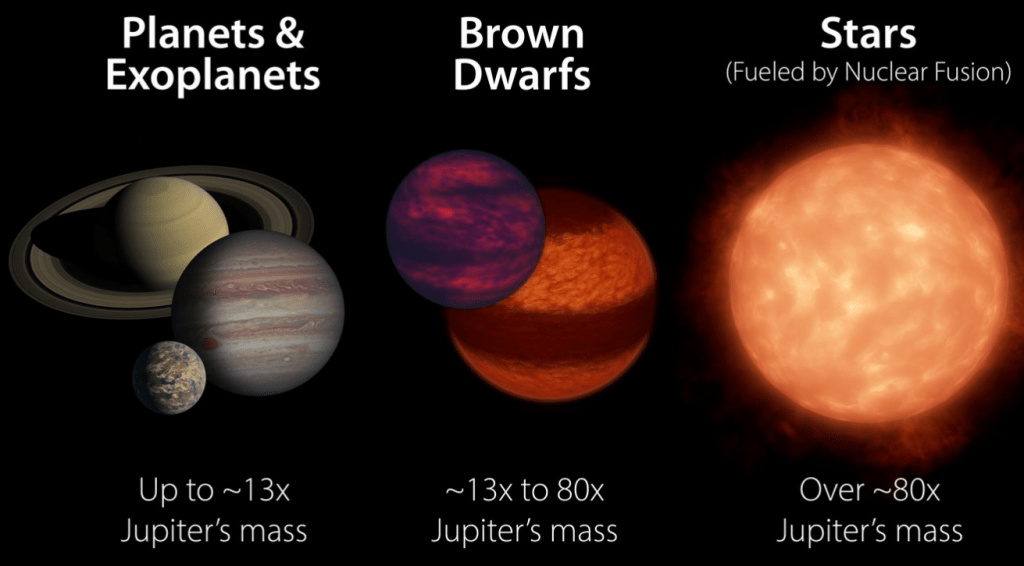
Credit: NASA/JPL-Caltech/R. Hurt (IPAC)
So, what exactly did they see?
This study looked at Luhman A, but previous studies have already looked at its sibling, Luhman B. Those studies inferred the presence of cloud patches, but none of them looked at polarized light. They only inferred the clouds by observing brightness changes over time. That’s great, but only effective if the clouds change brightness, which is not true of all clouds.
“Polarimetry is the only technique that is currently able to detect bands that don’t fluctuate in brightness over time,” says Millar-Blanchaer. “This was key to finding the bands of clouds on Luhman 16A, on which the bands do not appear to be varying.”
The study didn’t produce optical images of the cloud bands or the brown dwarf itself, but rather data showing they’re there. But their measurement of the amount of polarized light coming from it allows them to infer the presence of cloud bands through sophisticated atmospheric modeling. Unfortunately they couldn’t determine exactly how many bands of clouds are rotating around on Luhman 16A, but according to their models, the answer could be two.
The team measured both brown dwarfs in the binary pair with the NaCo instrument on the VLT. And while one of the pair showed cloud bands, the other did not.
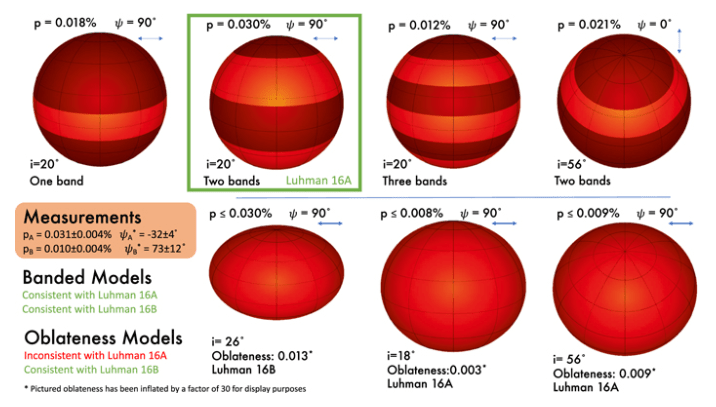
In their study the authors write “The measurements of Luhman 16B could be explained by oblateness or cloud banding, but the polarization of Luhman 16A can only be explained by bands of clouds, similar to those seen throughout the solar system.”
“We think these storms can rain things like silicates or ammonia. It’s pretty awful weather, actually.”
Co-Author Julien Girard, Space Telescope Science Institute
So what effect do these clouds likely have? According to co-author Julien Girard of the Space Telescope Science Institute, it could be similar to what we think happens on Jupiter. “We think these storms can rain things like silicates or ammonia. It’s pretty awful weather, actually,” Girard said.
The team also explained the difference between their study and previous studies: “Previous photometric and spectroscopic variability studies of Luhman 16A have either suggested patchy clouds or have been unable to constrain its cloud morphology due to nondetections of variability. In contrast, our polarimetric measurements detect bands that could not have been found using these techniques, as both methods rely on cloud morphologies or variations that rotate in and out of view.”
For the team behind the study, this represents just the beginning of this type of inquiry into brown dwarfs using polarimetry. They suggest that this study is critical to “furthering our understanding of the cloud dynamics in substellar objects.”
“Similar polarimetric studies should be pursued for other brown dwarfs with comparable levels of characterization (e.g., brown dwarfs with well-constrained masses and/or inclinations),” they write in their conclusion.
Unfortunately, the NaCo instrument used in this study has been decommissioned. But there’ll be other instruments.
The results of this study go beyond just brown dwarfs. The authors say they set the stage for further studies of atmospheric dynamics not only for brown dwarfs, but also for giant exoplanets. These methods could be used to search for signs of life or habitability.
“Polarimetry is very sensitive to cloud properties, both in brown dwarfs and exoplanets,” says Millar-Blanchaer. “This is the first time that it’s really been exploited to understand cloud properties outside of the solar system.”
More:
- Press Release: Bands of Clouds Swirl Across Brown Dwarf’s Surface
- Research Paper: Detection of Polarization due to Cloud Bands in the Nearby Luhman 16 Brown Dwarf Binary
- Universe Today: Astronomers Measure the Wind Speed on a Brown Dwarf for the First Time. Spoiler: Insanely Fast

